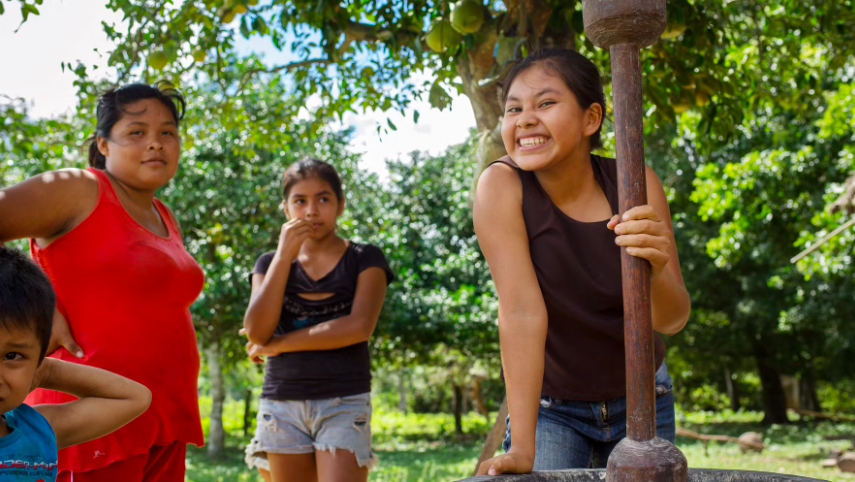New studies conducted in Latin America show that the best way to address the issue is to combat inequality in the communities surrounding forests.
A new report from the University of Bern found a direct link between the expansion of agriculture at the expense of tropical forest areas and the level of inequality in the surrounding community. In other words, greater inequality leads to more deforestation, while a higher degree of equality increases the chances of the forest being protected.
This is the conclusion shared by Mongabay.com in an article that describes studies on the relationship between inequality and poverty in communities surrounding tropical forest areas and the deforestation of these areas in Latin America.
“More work needs to be done to raise awareness of the logic of equality,” says Michele Graziano Ceddia, professor at the Center for Development and the Environment at the University of Bern. “It is striking how little we focus on this social illness.”
Inequality Increases Deforestation
But how does inequality trigger agricultural expansion and further deforestation?
The study presents two hypotheses:
Firstly, it may be due to unequal land distribution. When a few individuals own a large portion of the land, agricultural expansion becomes easier because there are fewer landowners to negotiate with and lower costs associated with acquiring more territory. An example highlighted in the study comes from the states of Mato Grosso and Pará in Brazil. Here, agriculture expanded significantly between 2000 and 2005, as producers targeted areas where land ownership was fragmented and concentrated in the hands of a few.
High inequality can also cause divisions and problems within local communities, making it harder to create collective efforts to protect public interests and the environment. In more equal societies, there is a greater likelihood of local communities working together, Ceddia explains.
Indigenous Peoples Protect Forests – When They Have Rights to Them
Carlos Mazabanda, field coordinator in Ecuador for Amazon Watch, has long worked with Indigenous Peoples in the Amazon rainforest. Mazabanda shares numerous examples where Indigenous Peoples have halted major infrastructure or extraction projects because they are well-organized and work collectively to resist encroaching companies.
“The organization of Indigenous Peoples in the Amazon is very strong, and when conflicts arise with, for example, mining or oil companies, they become even stronger,” Mazabanda explains. He points to the Shuar community, which has repeatedly driven oil companies out of their territory to protect the forest.
Several other studies have found similar results: when Indigenous Peoples’ land rights are recognized, deforestation decreases. A study by the World Resources Institute found that securing Indigenous land rights in just Colombia, Brazil, and Bolivia alone could prevent nearly 60 million tons of CO2 emissions annually by curbing deforestation.
However, in areas with higher poverty levels, where Indigenous Peoples can no longer sustain themselves from the land and are forced into consumer economies, local populations are more likely to fragment, leading to further environmental degradation. Collective action falters here because communities feel they have no other choice, Mazabanda notes.
Previous research has shown that countries with higher inequality often suffer from a range of problems, including weak institutions, explains Michele Graziano Ceddia. These weak institutions are less likely to enforce regulations, such as controls on agricultural expansion.
“Institutional frameworks are the rules of the game, and they are crucial for environmental protection. A country with high corruption, for instance, is less likely to enforce proper environmental safeguards,” Ceddia told Mongabay.
For years, researchers have debated whether imbalances in social and economic power contribute to deforestation. Ceddia’s study is the first to establish a significant link between agricultural productivity in Latin America, its impact on forest loss, and various forms of inequality.
The study, published in Proceedings of the National Academy of Sciences, analyzes data from ten Latin American countries (Argentina, Bolivia, Brazil, Colombia, Costa Rica, Guyana, Mexico, Peru, Suriname, and Venezuela) over a 20-year period from 1990 to 2010.
“Across the board, a pattern of inequality emerges consistently and statistically robust,” says Ceddia.
Solutions Are Political
The study from the University of Bern proposes several policy measures to address inequality and protect forests. Recommendations include implementing land value taxes, improving inheritance laws, enacting land reforms, and recognizing Indigenous land rights.
The report coincided with Oxfam’s release of new global inequality data, revealing that the 26 wealthiest individuals own as much as the 3.8 billion people who make up the poorest half of the world’s population. It also highlights that, in some countries, the poorest 10% pay a proportionally higher share of their income in taxes than the wealthiest 10%.
“There is significant reliance (…) on the goodwill of philanthropists,” Ceddia notes. However, “the mere presence of such extreme wealth inequality has harmful effects on society. Any [political] action addressing any form of inequality is urgent,” he concludes.
Strong Local Communities Defend Forests
t Forests of the World, the new research is met with great interest, as it aligns with many of the strategies the organization already employs to combat deforestation. Jakob Kronik, head of the International Department at Forests of the World, emphasizes:
“This is a truly exciting new study that highlights the importance of a rights-based approach to sustainable development,” Kronik states.
“Sustainable development requires addressing local challenges, such as inequality, which drive deforestation. That’s why we focus on creating sustainable income sources that don’t put pressure on forests, such as agroforestry. Strengthening the organization and land rights of Indigenous Peoples and other local forest-dependent communities is another crucial part of our work to protect forests. The stronger and more unified a local community is, the better equipped they are to defend their forests,” he concludes.
Press Contact
Jonas Schmidt Hansen
Who is Forests of the World?
We work to preserve the world’s forests, both in Denmark and the world’s tropical forests.Our focus areas include sustainability, Indigenous Peoples and local engagement.
